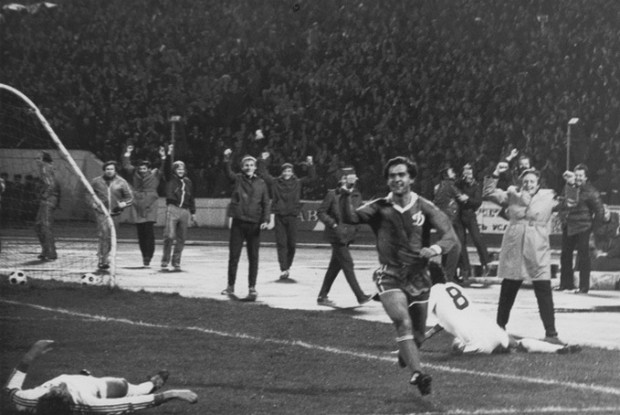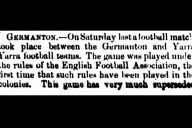As a child, some things leave a bigger impression on you than others. These things often go on to become a template for how you measure and view other things that come in their wake.
These early impressions can shape and colour our views all the way into adulthood, possibly staying with us for the rest of our lives as some sort of ideal against which all else pales and falls short.
In regard to ideal forms of football, one of the most formative experiences I had was to have the privilege to watch the then champions of the USSR, Dinamo Minsk, wallop Hungarian champions Gyor ETO in a European Cup match in 1983.
As a football-mad 11-year-old, it was a truly amazing experience.
Coached by Eduard Malofeev (aka as Malofeyev), Dinamo Minsk had won its first ever domestic championship title in 1982, pipping the all-powerful Dynamo Kyiv by a point. Dynamo Kyiv was coached by another of the great Soviet era football managers, Valeriy Lobanovskyi.
Dinamo Minsk was the only club from Belarus to play in the top flight of Soviet football. The club’s victory in 1982 was engineered by Malofeev, whose swashbuckling managerial style entranced the Minsk fans.
Football writer Jonathan Wilson, who has written extensively on Eastern European football, devotes a fair bit of time to both Lobanovskyi and Malofeev in his books Inverting the Pyramid: The History of Football Tactics and Behind the Curtain: Football in Eastern Europe.
The 1982 campaign was something of a high-water mark in the rivalry between the systems-obsessed Lobanovskyi and the more intuitive, individualist Malofeev. As Wilson describes it:
“It is an over-simplification to say Lobanovskyi saw his players as tools to be deployed, but not much of one; Malofeev, though, was concerned with individuality and self-expression.”
The following season, Minsk would finish third in the league and make it to the quarter-finals of the European Cup, where they would bow out to Dinamo Bucharest, who would then go on to lose to eventual winners Liverpool in the semi-finals. (Dundee United were one of the other semi-finalists that season – how times have changed…)
It was a cold, suitably Eastern Bloc sort of midweek night, from memory, when we went to see that European Cup second round match between Gyor ETO (now in the equivalent of the Hungarian 3rd Division) on October 19, 1983. The lángos (deep-fried flat bread) was in abundance and the crowd was fortifying themselves against the chill with rum tea.
To put things in some perspective in regard to the quality of the two teams on show that night, both sides contained several international players, and both Hungary and the Soviet Union had performed with some distinction at the 1982 World Cup. The early 1980s was perhaps the last gasp period of moderate relevance for Hungarian football on the world stage, while the Soviet Union qualified for the ’82 and ’86 World Cups and were runners-up at the ’88 Euro Championships.
The Gyor ETO team were known at the time for playing a high tempo, attractive Dutch-style game, while Malofeev’s Minsk had a similarly attack-minded disposition.
Among the players in Minsk’s line-up that evening were Soviet internationals, Sergei Borovsky, Sergey Gotsmanov, Georgi Kondratiev and Andrei Zygmantovich; however, unfortunately, missing from the Minsk team sheet that night were tragic club legend Aleksandr Prokopenko and the ultra-talented Sergei Aleinikov, who would go on to play for Juventus and Lecce in Serie A later in his career.
Up to that point on our European holiday we had already seen Liverpool play Spurs at White Hart Lane, which was a match more memorable for the frightening nature of the fans than for what happened on the field; we had also seen Hungary play England in Budapest; as well as several Austrian First Division matches.
None of this quite prepared me for what Malofeev’s team were about to unleash.
Within the opening ten minutes the score was 2-0; Minsk had blitzed the hapless ETO team with wave after wave of co-ordinated and irrepressible movements that bent and stretched the Hungarians totally out of shape.
For perhaps the first time in my football-watching life, I began to grasp those often bandied about terms such as strategy, tactics and teamwork. Maybe because it was happening live in front of my eyes, and not on TV, I could marvel at the speed of movement and thought being displayed by the Minsk players; the way in which the focus of attack seemed to switch within the few seconds it took to hit a crisp 30-metre pass from full-back to inside forward.
Malofeev’s team obliterated simple dichotomies such as short-passing versus long-ball styles, employing either or both in the one movement wherever they felt fit. Sweeping 50-metre cross-field passes were hit with precision from sideline to sideline, accepted and controlled with technique that looked as schooled by the Bolshoi ballet as on the training pitches of Minsk. The Minsk players ran at the cowering ETO players like Cossacks on a kamikaze mission, putting together intricate combination passes or else just sailing past with the deft dip of a shoulder or slight feint to deceive.
This was football at it most emphatic and delirious. By half-time Minsk were 4-1 up. The crowd was in thrall to this blizzard from Belarus and the malevolent magic of Malofeev’s team.
The only choice now for most of the ETO fans was whether to ease the pain or enhance the joy with more rum tea.
Not long after halftime it was 5-1. The Hungarians managed to pull a couple back before the final whistle, but Minsk wrapped up the first leg of this two-legged affair, winning 6-3 – a scoreline that has a special place in the heart of Hungarian football fans. They then beat ETO 3-1 in the return leg in Belarus to seal their place in the next round.
Malofeev referred to his style as “sincere football”. The Minsk goalkeeper of the time, Mikhail Vergeenko, tells Jonathan Wilson in Inverting the Pyramid that Malofeev’s football was about idealism, trying to instil in players the belief that they could overwhelm opponents by playing an all-out attacking style of football that defied the pragmatic realism exemplified by the man-machine system of Lobanovskyi at Dynamo Kyiv.
“He was a person who could get to your heart, your soul,” Vergeenko tells Wilson.
Malofeev never really recaptured that spirit again after leaving the Minsk job to become the head coach of the Soviet Union, up until his great rival Lobanovskyi took over from him on the eve of the 1986 World Cup.
In the subsequent years he has drifted from job to job – his CV would give the famously itinerant Bela Guttmann a run for his money – including a fairly disastrous stint at Scottish Premier League club Hearts in 2006.
But I consider myself very lucky to have caught Malofeev and his Dinamo Minsk team right near the top of their game. More than 30 years on, I still hold on to that childhood memory as an ideal for how football can be played, and why it is called the beautiful game.
This is a 30-min documentary in Russian, roughly translated as “The team attacks together”, about Dinamo Minsk’s 1982 league title win, with some fantastic footage, fashions and music.
Main picture of Aleksandr Prokopenko taken from Dinamo Minsk website.
















